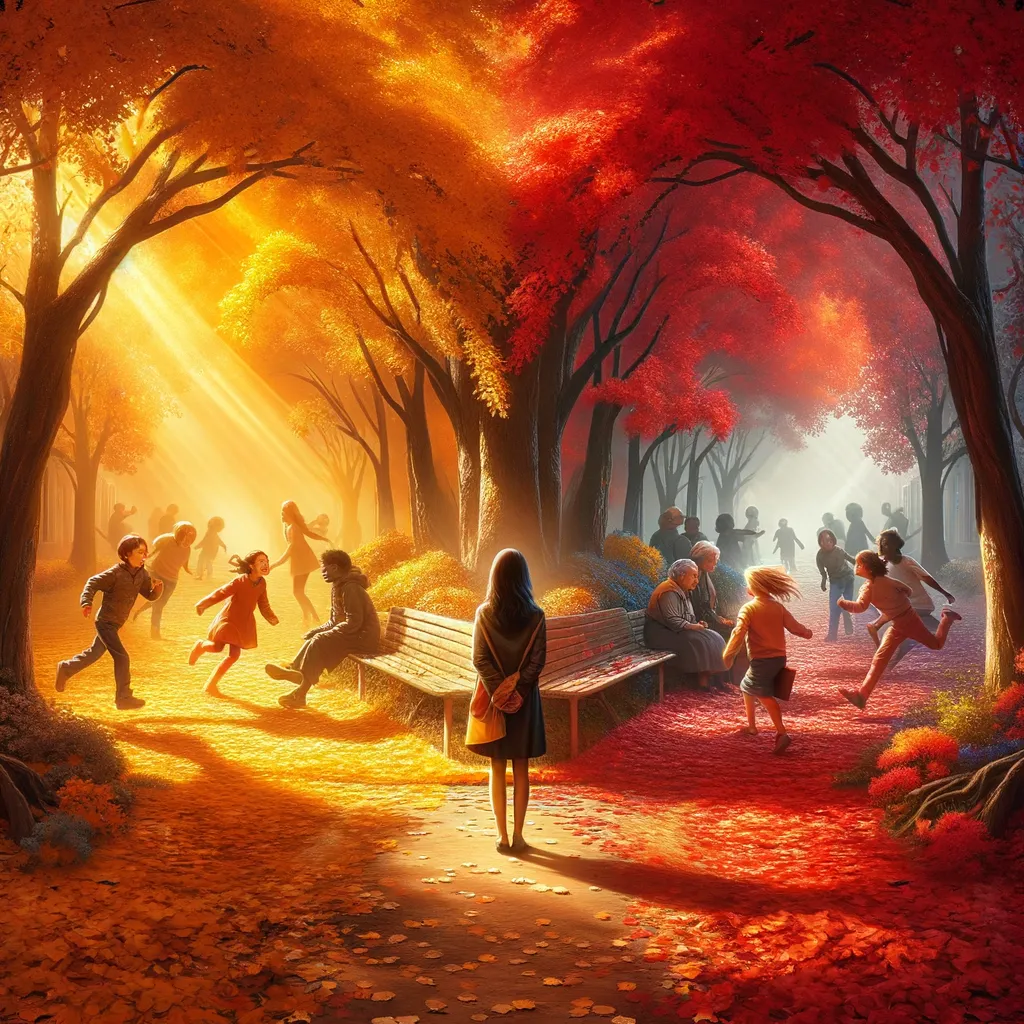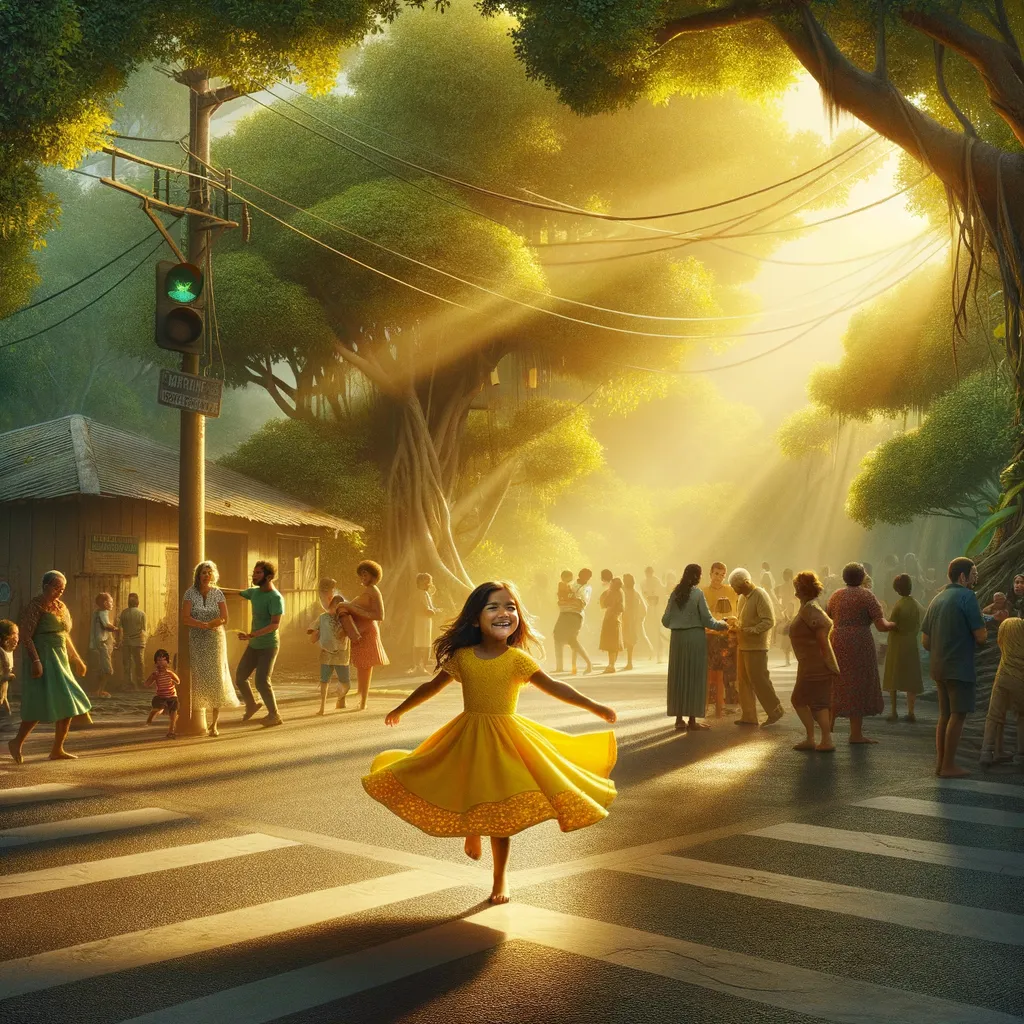Crossroads of Joy and Sorrow: A Journey of Discovery
At a vibrant park, where the laughter of children dances with the rustling autumn leaves, a young soul stands at a poignant crossroads of understanding. Amidst the chaos, a solitary woman on a bench captures the observer’s attention, her sorrow contrasting sharply with the carefree joy surrounding her. As a child tumbles and cries out for help, an inner conflict arises: should one rush to comfort the child or reach out to the woman in need of connection? In this moment of choice, the observer discovers that ethics are not mere rules but a living tapestry woven from the complexities of human emotion, where every action reverberates beyond the self. Ultimately, a small act of kindness ignites a spark within the woman, revealing a profound truth: compassion creates ripples that transcend individual experiences, inviting us to embrace the intricate dance between joy and sorrow in our shared humanity.
In the memory of October 19, 2002, I found myself standing at a crossroads, enveloped by the fading colors of autumn leaves that whispered secrets of change. The air held a crispness that hinted at both the chill of impending winter and the warmth of cherished memories. It was a day that would etch itself into the fabric of my consciousness, not just for its vivid imagery, but for the profound realizations that accompanied it. I ventured into the local park, where children’s laughter mingled with the rustling foliage, creating a symphony of innocence and joy. It was here that I would stumble upon a moment that would challenge my understanding of right and wrong, shaping my ethical compass in ways I never anticipated.
As I wandered along the path, a small group of children played a game of tag, their exuberance infectious. Yet, amidst their laughter, I noticed a solitary figure sitting on a nearby bench, a woman whose expression was a tapestry of sorrow and contemplation. Her presence was a stark contrast to the vibrant chaos around her, a reminder that life was not always painted in bright hues. Curiosity tugged at me, urging me to explore the story behind her stillness. It felt as if the universe was nudging me to confront the complexities of human experience, to understand that joy and pain often coexist in a delicate balance.
The sun dipped lower in the sky, casting long shadows that danced upon the ground, and I found myself drawn closer to her. I had always been taught to look for the good in people, to offer kindness and understanding. Yet, as I observed the woman, her deep-set eyes spoke of struggles that transcended words. It struck me that my ethical beliefs, shaped by a childhood of fairy tales and moral lessons, had never truly prepared me for the weight of genuine human suffering. I realized that empathy was not merely a principle to uphold but a visceral experience that demanded engagement and awareness.
Suddenly, a commotion erupted as one of the children tripped, falling to the ground in a flurry of limbs and tears. Instinctively, I turned to help, but the woman on the bench remained still, seemingly lost in her own world. In that instant, I grappled with a troubling thought: was I to prioritize the immediate needs of the child, or should I reach out to the woman, who appeared to be in need of connection? This internal tug-of-war revealed the multifaceted nature of ethics—how decisions often lay shrouded in ambiguity, where right and wrong blurred into shades of gray.
As I approached the fallen child, a sense of urgency propelled me forward. I knelt beside him, brushing dirt from his knees and offering words of comfort. Yet, even as I attended to his needs, my gaze flickered back to the woman. The stark contrast of our interactions—the joy of a child juxtaposed with the sorrow of an adult—felt like a metaphor for life itself. It dawned on me that the ethical compass I had forged was not solely about altruism or selflessness; it was also about recognizing the intricate web of human emotions that bind us all.
In the moments that followed, I witnessed something remarkable. The woman, who had seemed so distant, began to shift on her bench, her expression softening as she observed the scene before her. Perhaps my small act of kindness had reignited a spark within her, a reminder that connection could blossom even in the darkest of times. It was a revelation that surprised me; compassion had a ripple effect, transcending individual actions and extending into the lives of others in ways I had yet to understand.
The day unfolded, and with it, the sun dipped below the horizon, casting a golden glow over the park. I left with a newfound awareness that ethical principles are not static; they evolve, shaped by experiences that challenge our perceptions. The laughter of children, the silence of sorrow, and the interconnectedness of our stories had woven a tapestry rich with meaning. I began to see that my ethical compass was not just a set of rigid guidelines but a living entity, constantly adapting to the world around me.
Years later, I often reflect on that day. The colors of autumn remain vivid in my mind, a symbol of transformation and the unpredictable nature of life. The woman’s quiet strength and the child’s innocent laughter serve as reminders that our choices resonate beyond the moment, echoing through the lives of others. I learned that ethics are not merely about defining principles but about embracing the complexities of humanity, the intricate dance between joy and sorrow.
As I ponder the lessons gleaned from that October day, I am left with a lingering question: how do we navigate the delicate balance between our ethical beliefs and the unpredictable realities of the human experience, and what does it mean to truly connect with one another in a world filled with both beauty and pain?
In the dance of joy and sorrow, the true essence of humanity lies not in rigid ethics, but in the fluid understanding of connection that transcends the boundaries of individual experiences.



